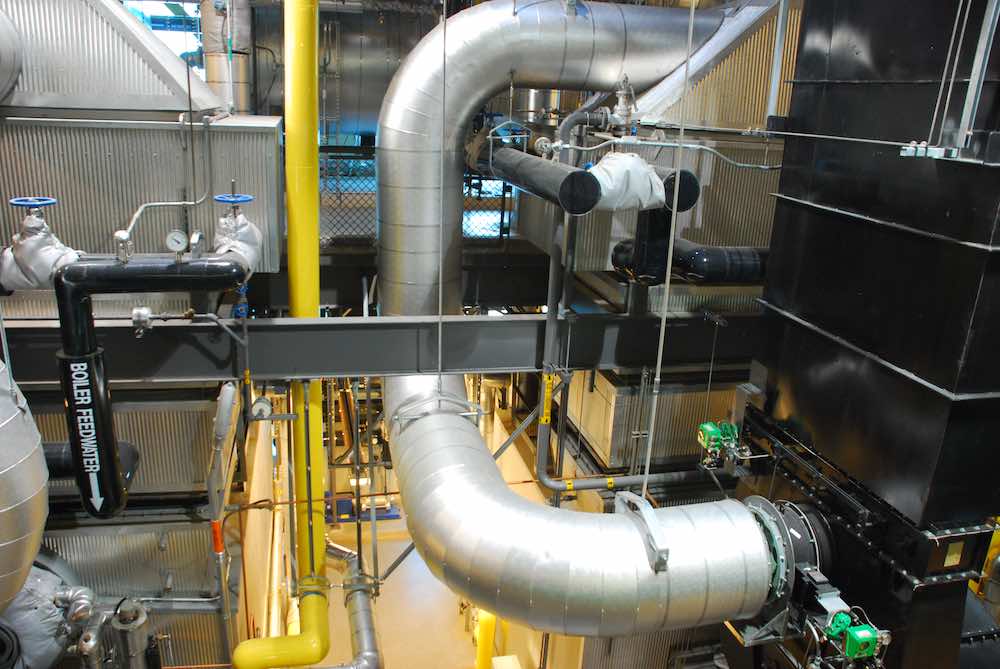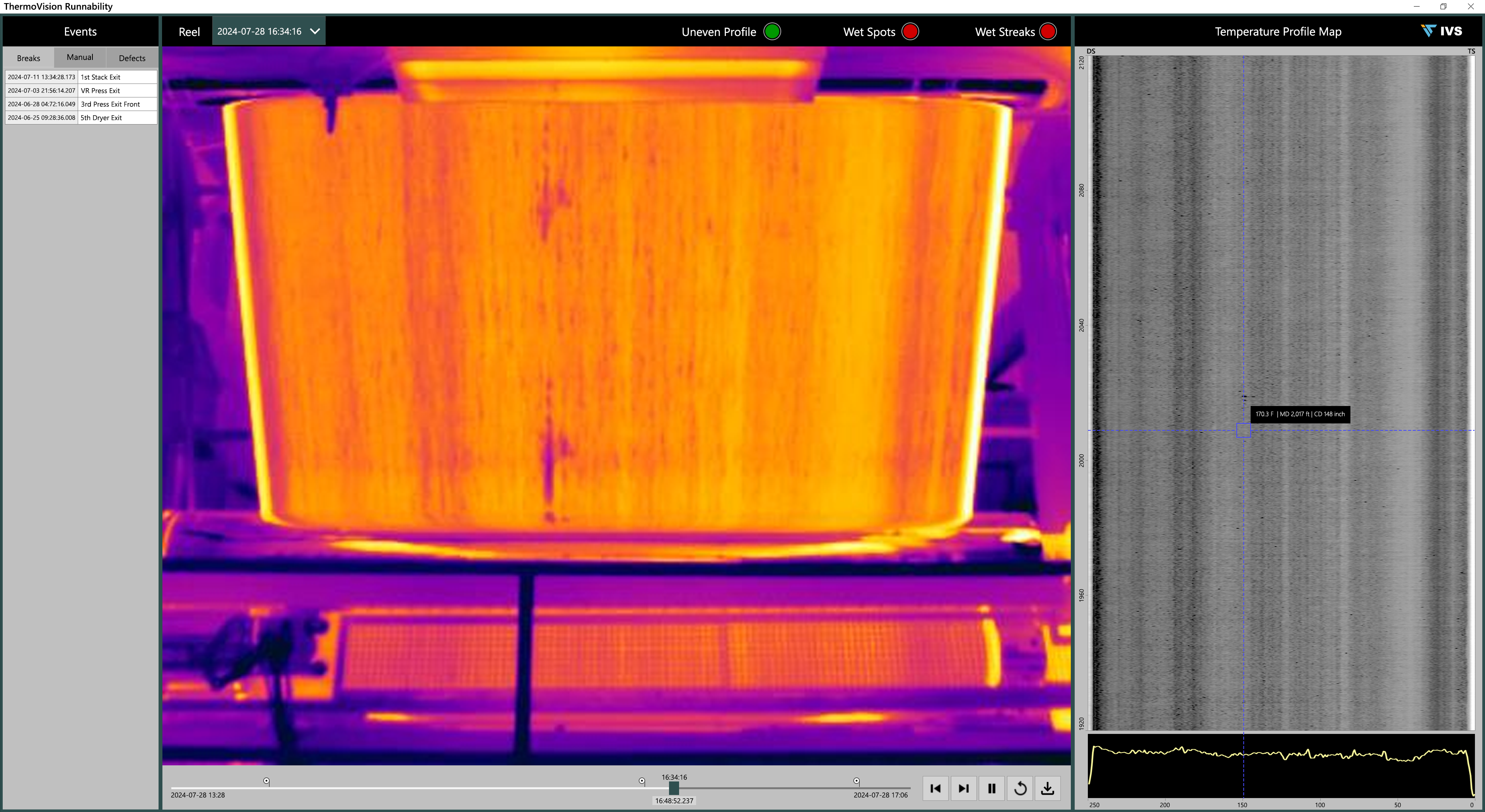Hydrogen has been used in boilers for decades. If implemented correctly, hydrogen can be used safely in industrial boilers to lower carbon footprints

Learning Objectives
- Review the history of hydrogen and boilers.
- Learn how hydrogen can lower the carbon footprint of a boiler.
- Understand the modifications that may be necessary once hydrogen is introduced.
Boiler insights
- Hydrogen boilers are typically found in refineries, chemical plants and other facilities where hydrogen is produced in abundance as a byproduct of other processes.
- Manufacturing facilities considering a feasibility study on a boiler retrofit for hydrogen should conduct an evaluation of the entire boiler system.
Ramped up attention on decarbonization goals has generated a surge of interest in switching utility-class coal, oil and natural gas boilers to either 100% hydrogen or a hydrogen blend. Are retrofits feasible? And if so, what are the factors that influence hydrogen modifications across a range of units?
Here are some of the main things to consider for those interested in adding hydrogen to existing boilers.
Hydrogen firing isn’t new
For most people, the idea of adding hydrogen to existing boilers is novel and new. It has been around for some time. A great many packaged boilers have been running on nothing but hydrogen for decades.
“Hydrogen mixes are nothing new in boiler operation,” said Gerardo Lara, vice president of fired boiler sales at Rentech Boiler Systems Inc., Abilene, Texas. “Most manufacturers have experience in dealing with the nuances of hydrogen and can advise you on how best to blend it with natural gas.”
Hydrogen boilers are typically found in refineries, chemical plants and other facilities where hydrogen is produced in abundance as a byproduct of other processes. Refineries have learned to harness hydrogen in their boilers safely and efficiently. As their supply hydrogen is free, it helps these facilities save on fuel costs. Unfortunately, most facilities are not in their position. They will have to pay for hydrogen and it generally doesn’t come cheap.

Decarbonization potential
Methane is now regarded by the Environmental Protection Agency and other environmental bodies as a greenhouse gas. Its combustion produces emissions such as carbon dioxide (CO2), sulfur dioxide and nitrous oxide (NOx). Hydrogen combustion produces no harmful emissions except NOx. This fact has governments and environmental groups salivating about its decarbonization potential. Note, however, that the peak flame temperature of hydrogen is higher than natural gas. Facilities will have to determine how much more NOx this is likely to generate.
“NOx emissions mitigation measures will be needed such as flue gas recirculation (FGR) and selective catalytic reduction systems,” said Lara.
Safety for hydrogen boilers
The characteristics of hydrogen are quite different from coal and natural gas. With reference to safety, hydrogen has a much wider explosive range. Methane has a lower explosion limit (LEL) of 5% and an upper explosive limit (UEL) of 15%. In other words, there is only a 10% range of potential explosiveness that needs to be considered by safety professionals and engineers. Hydrogen’s LEL is 4% and its UEL is 70%. Thus, expect to have to upgrade safety systems and add additional safeguards to prevent leakage and mitigate possible explosions.
Another safety factor to consider is the higher flame temperature of hydrogen. When comparing adiabatic flame temperature (ambient air with 1.3% moisture content) natural gas burns at around 3,500°F and hydrogen at close to 4,000°F. As hydrogen is hotter burning, thermal NOx emissions need to be addressed and burner construction materials may have to be upgraded.
Boiler modifications
Some modifications are to be expected when shifting boiler fuel. In some cases, these will be minor while in others, more substantial changes will be required.
“For a coal to natural gas or hydrogen conversion, all combustion air must be delivered by the forced draft fan through the secondary air ducts,” said Denis Osowski, development director, engineering technology at Babcock & Wilcox. “Modifications may also be needed to the flue gas recirculation.”
He also recommended checking the superheater and reheater for metal overstress and making any necessary surface adjustments. In some cases, a bigger attemperator may also be required.
To keep retrofit costs down, packaged boilers are probably the easiest type of boiler to gain experience in hydrogen combustion.
“The flexibility and straightforward design of packaged water tube boilers simplifies the addition of hydrogen while keeping risk relatively low,” said Lara.

Water presence and density
One factor not often appreciated about hydrogen combustion is that it produces water as a byproduct. Drains and drying measures should take this factor into account.
“The water dew point of flue gas rises when hydrogen is fired,” said Lara. “Cold parts of the boiler in contact with flue gas may be susceptible to higher levels of condensation.”
There are a several technical factors that must be considered related to the combustion of hydrogen and how it compares to other fuels. Natural gas is denser than hydrogen. Hence, facilities will need a lot more of it by area than natural gas. This impacts the size of storage vessels as well as diameter of piping and the size valves.
“You will need a lot more hydrogen, bigger pipes, larger metering stations and perhaps some other retrofit modifications,” said Lara. “Those responsible for the design of the hydrogen supply system should be tasked with providing systems that can accommodate the higher volume of gas needed at the desired pressure and obtain the necessary British thermal unit (Btu) input for the boiler.”
Wobbe index
The Wobbe index is a measure of the heating value of a gas arriving at the burner orifice. The number is derived from a metric known as higher heating value (HHV) in the context of gas density. It is used to compare the ability of fuel gases to deliver energy. The Wobbe index of natural gas is only 5% higher than that of pure hydrogen. However, impurities change the picture.
“A very small amount of impurity in hydrogen makes a huge difference in Wobbe index,” said Osowski.
About 2% water by volume makes the Wobbe index of hydrogen 15% lower than natural gas, and 2% of nitrogen lowers it by more than 20%. On the flipside, 2% carbon dioxide in hydrogen lowers the Wobbe index by 28%.
“Boiler burners can seamlessly convert from natural gas to hydrogen in most cases,” said Osowski. “But as you get more impurities, you get lower heat content and might have a problem.”
What does all this mean in terms of overall efficiency? Osowski estimates that you lose around 5% of boiler fuel efficiency moving from natural gas to hydrogen.
Burners
Babcock & Wilcox supplies burners for use in boilers and has developed models specifically for hydrogen blends. Its hydrogen combustion technology produces no CO2 and is commercially ready. To date, the company has supplied more than 60 industrial water-tube boilers firing hydrogen and hydrogen-blended fuels. These burners can be retrofitted onto existing equipment or provided with new installations to fire hydrogen efficiently and safely. They are available as dual-fuel (natural gas or coal and hydrogen) or as dedicated hydrogen burners.
“It is best to have more nozzles for dedicated hydrogen combustion to spread the flame around more,” said Osowski. “Modifications have been needed to igniter systems and flame scanners.
Piping and support infrastructure
Upstream of boiler firing, facilities will need bigger pipes for hydrogen as it’s a lighter and less dense molecule. Valves and seals may also have to be replaced to prevent leakage.
“Boiler modifications will likely be the least of the challenges faced in a conversion,” said Osowski. “Piping, valving and other supporting infrastructure will probably be most of the expense and work required.”

Hydrogen availability for boilers
The “elephant in the boiler room” when it comes to hydrogen is availability. Those seeking to convert to natural gas and blend-in hydrogen should first consider where they are going to get hydrogen. There just isn’t that much of it around. If there is a hydrogen hub available with a coal or natural gas boiler sitting nearby, the application may make sense. Otherwise, think twice.
“Hydrogen is a super expensive fuel and may require expensive modifications,” said Osowski. “It is technically feasible but often won’t make sense.”
This is shown sharply by the number of actual hydrogen installations that have happened recently. “Babcock & Wilcox nor anyone else we know has done a boiler conversion for hydrogen to date,” said Osowski.
His company is currently part of a co-firing test of hydrogen in a coal burning utility plant in Canada. In addition, there is plenty of traffic with unit owners seeking to study their boilers with respect to firing hydrogen. However, none of this has resulted in supply contracts yet.

Anyone moving forward with a feasibility study on a boiler retrofit for hydrogen is advised to conduct an evaluation of the entire boiler system. This should include all combustion equipment. It should examine potential changes in heating surfaces such as superheaters and reheaters, the possible addition of flue gas recirculation, attemperator capacity and furnace tube metal integrity. As well as reviewing fans, air heaters, air ducts and overfire air systems, it should also encompass boiler control and automation systems, including the burner management system as upgrades may be needed there, too.



